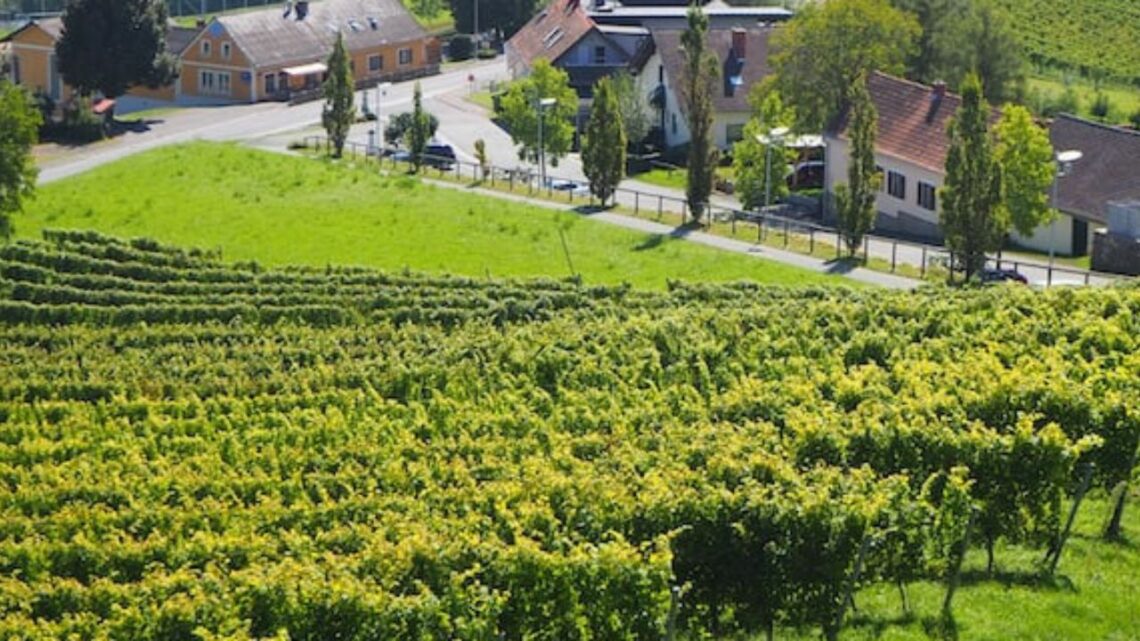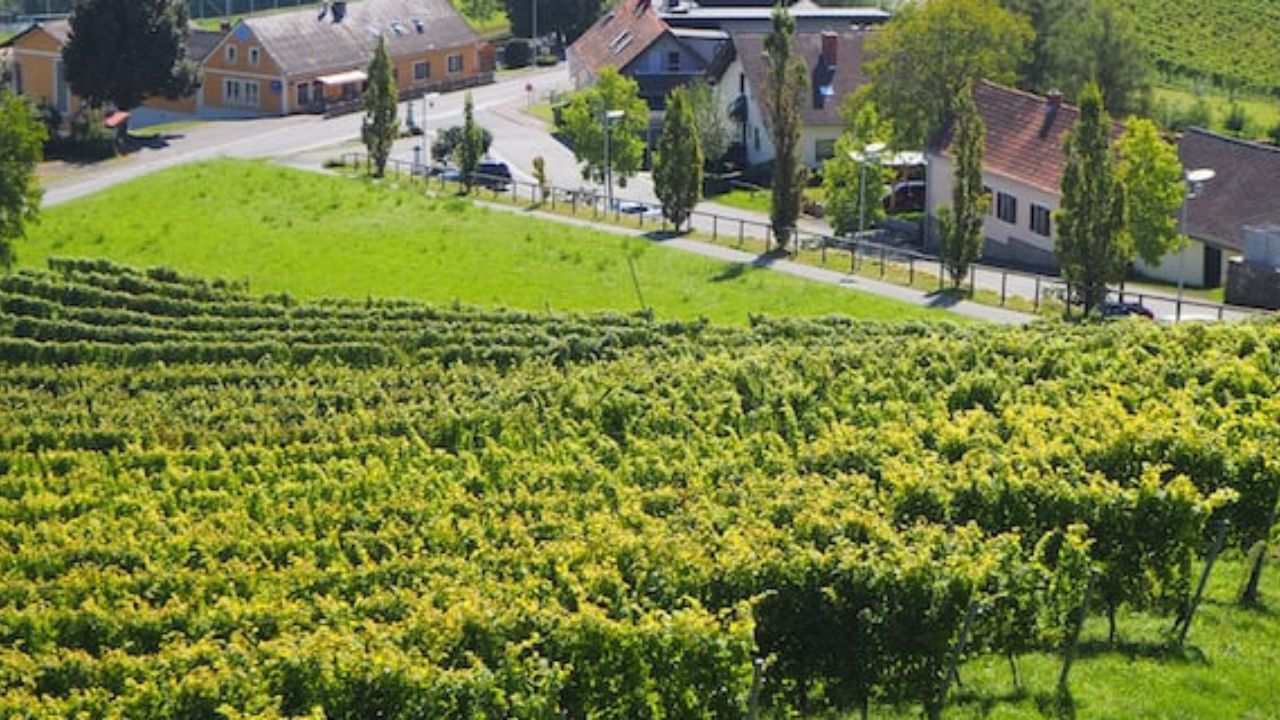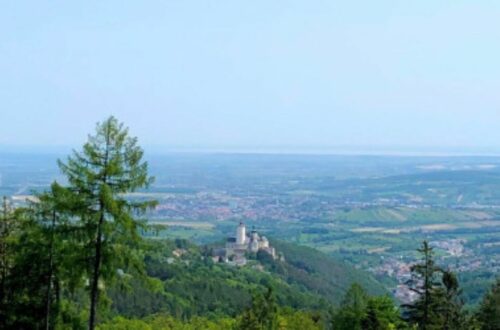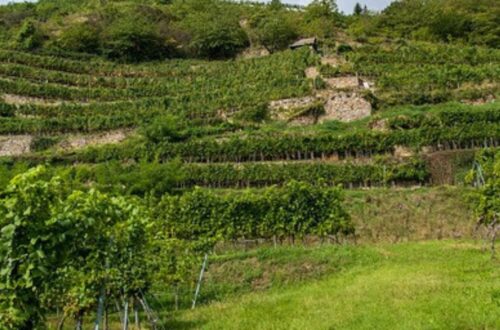
Vulkanland Steiermark wines
Steiermark, which is also known as Styria, is a picturesque wine region in Austria renowned for its exquisite grape varieties that are fresh, vibrant, and elegant. Spanning across 4,630 hectares of vineyards, the majority of which are situated in the southern part of the region, Steiermark offers a unique and unparalleled selection of wines across its three distinct wine zones: Vulkanland, Weststeiermark, and Südsteiermark.
The viticultural history of Steiermark is deeply rooted, with evidence of grape cultivation tracing back to ancient times, including the eras of the Celts and Romans. However, the region experienced setbacks during the 16th and 17th centuries due to wars and plagues, leading to a decline in viticulture. It was not until the 1840s that Archduke Johann revitalized winemaking in Steiermark by establishing a research institute.
So let’s dive in the first sub-region : Vulkanland!
Volcanic soils and sunshine define Austria’s Vulkanland region. This area is known for its charming villages and authentic experiences. The warmer climate here ripens grapes earlier, resulting in richer wines with slightly less intense aromas. Basalt soils, especially around the famous village of Klöch, are ideal for grape growing. Weissburgunder (Pinot Blanc) and Welschriesling are the main players, with Chardonnay, Müller-Thurgau, Sauvignon Blanc, and Zweigelt also present. Top wineries like Krispel and Neumeister showcase the potential of Vulkanland, with Krispel excelling in single-vineyard volcanic wines and Neumeister impressing with their Sauvignon Blanc and aged Grauburgunder (Pinot Gris).
Vulkanland overall presentation
Vulkanland literally means “volcanic land”. This region is one of Austria’s most authentic tourist destination. If you’re into hiking you will find remarkable themed hiking trails (with excellent signage). Stop at one of the farm inns along the way, they are always welcoming and will invite you to taste, not only the wines of course, but also the famous Styrian pumpkin seed oil!
For centuries, this region has been a highly disputed border area, as evidenced by numerous castles and fortresses perched on high basalt cliffs. Today, these borders have disappeared, and castles like Riegersburg and Schloss Kapfenstein host peaceful cultural and culinary events.
Now, four wine routes lie in this idyllic hilly landscape, and the Styrian wine archive in St. Anna am Aigen provides an excellent overview of Styrian wine production.
Among the tourist destinations are the thermal towns along the volcanic fault line.
Terroir of Vulkanland
The soils in Vulkanland are a combination of basalt and sedimentary soils composed of gravel and limestone. The lower Styrian volcanic region hosts extinct volcanoes, which is a unique feature in Austria, although less than 10% of the vineyards lie on such soils.
The landscape has been covered by ancient and more recent volcanic activity, resulting in red trachyandesite, hard black basalt, porous basaltic scoria, solidified ash tuffs from explosive eruptions, and fine sediments from crater lakes.
In the upper part, from the south to the east of the Joglland area near Hartberg, most vineyards lie on hard crystalline rocks of the Austro-Alpine region, ie gneiss, and micashists.
Further south, the soil is mostly composed of loose and varied rocks, often sandy and gravelly.
These unique geological conditions give birth to wines that are fine and have a mineral spicy taste.
Thanks to its slightly warmer climate and the influence of the Pannonian plains, the grapes in Vulkanland ripen earlier, resulting in richer wines with slightly less pronounced aromatics.
Among the villages in the region, Klöch stands out as the most famous. Its basalt soils warm up quickly during summer and retain heat, creating optimal conditions for grape growth and contributing to the exceptional quality of the wines produced there.
The other main wine-growing municipalities include Bad Radkersburg, Feldbach, Gleisdorf, Hartberg, Kapfenstein, Riegersburg, St. Peter, Straden, Tieschen, and Weiz.
In the north, on Mount Ringkogel near Hartberg, vineyards stretch up to an altitude of 650 meters above sea level, making them some of the highest vineyards in Austria.
Grapes varieties in Vulkanland
The Vulkanland region has 1524 hectares of vineyards, where a variety of grape varieties thrive.
The main grapes cultivated here are Weissburgunder (Pinot Blanc) and Welschriesling, known for producing high-quality wines. Additionally, Chardonnay, Müller-Thurgau, and Sauvignon Blanc can also be found in the vineyards.
Another prominent grape in the region is Zweigelt, with 190 hectares dedicated to its cultivation.
Vulkanland DAC
All these grape varieties form the foundation of Vulkanland Steiermark DAC.
However, ror Ortsweine (local wines), specific main grape varieties are gradually defined depending on the region:
- Oststeiermark: Sauvignon Blanc, Weissburgunder
- Riegersburg: Sauvignon Blanc, Weissburgunder
- Kapfenstein: Sauvignon Blanc, Weissburgunder
- Sankt Anna: Sauvignon Blanc, Weissburgunder
- Tieschen: Sauvignon Blanc, Pinot cuvées
- Klöch: Sauvignon Blanc, Traminer
- Straden: Sauvignon Blanc, Grauburgunder
- Sankt Peter: Sauvignon Blanc, Weissburgunder
Wineries in Vulkanland
Now to the wineries! I wasn’t able to visit this region as much as I would’ve so please, feel free to complete (be sure I will during my next travels!)
Krispel Winery is renowned for its exceptional wines, particularly from its two single vineyards, Hochstrandl and Neusetzberg, both characterized by volcanic soils. The wines produced by Krispel are consistently of high quality, displaying a distinct and stylish character.
Neumeister Winery offers a unique and intriguing experience for visitors. The winery is ingeniously integrated into a hillside, and guests enter through a chimney… what for a dramatic entrance!
Christoph Neumeister, the winemaker, believes that such an unconventional approach is necessary to attract visitors to a remote corner of Austria.
Neumeister is particularly known for its excellent Sauvignon Blanc, which defies the stereotypes associated with the Südsteiermark region. However, the most important variety for Neumeister is Grauburgunder (Pinot Gris). Their “Saziani” wine, made from 45-year-old vines, undergoes 18 months of aging in large casks, resulting in a truly remarkable expression of the grape.
Conclusion : Vulkanland Steiermark wines
Vulkanland is a captivating region in Austria known for its volcanic landscapes and authentic tourist experiences. Its terroir is mostly a combination of basalt and sedimentary soils, including gravel and limestone. With a slightly warmer climate and the influence of the nearby Pannonian plains, grapes in Vulkanland ripen earlier, producing richer wines with slightly less pronounced aromatics.
Klöch is the most famous village in the region, known for its basalt soils that warm up quickly during summer and retain heat, creating ideal conditions for grape cultivation.
The main grape varieties in Vulkanland are Weissburgunder (Pinot Blanc) and Welschriesling, while Chardonnay, Müller-Thurgau, and Sauvignon Blanc are also grown. Zweigelt, a notable grape variety, covers 190 hectares of vineyards in the region.
Two renowned wineries in Vulkanland are Krispel and Neumeister. Krispel is known for its exceptional wines, particularly from the Hochstrandl and Neusetzberg single vineyards, both with volcanic soils. Neumeister is celebrated for its excellent Sauvignon Blanc, challenging stereotypes associated with the Südsteiermark region. The winery’s most important variety is Grauburgunder (Pinot Gris), with their “Saziani” wine aged for 18 months in large casks, showcasing the remarkable expression of the grape from 45-year-old vines.








